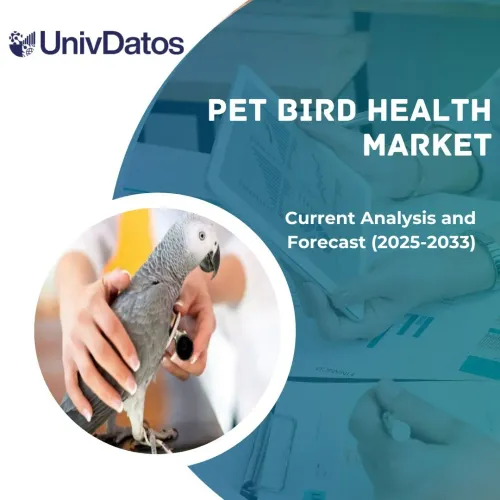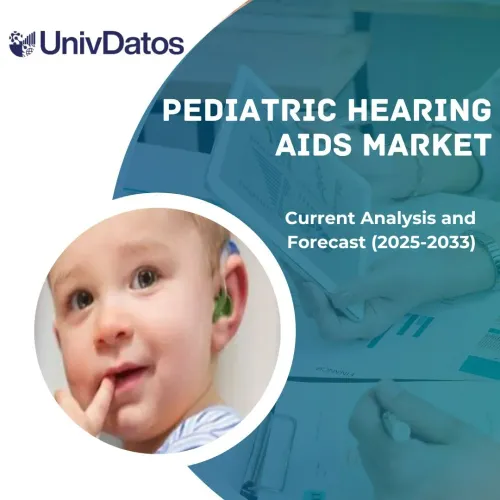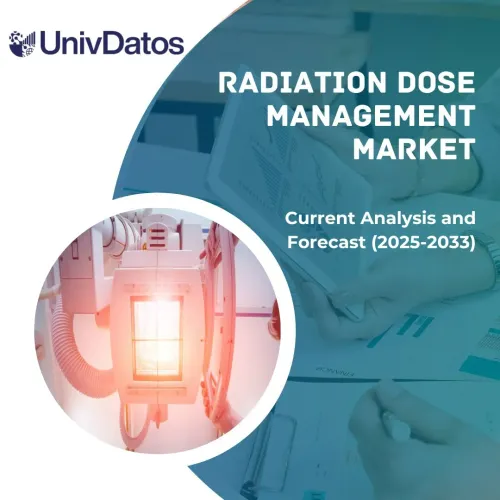- Home
- Chi siamo
- Settore
- Servizi
- Lettura
- Contattaci
Throat Cancer Therapeutics Market: Analisi e Previsioni Attuali (2023-2030)
Enfasi per Tipo di Cancro (Cancro della Faringe e Cancro della Laringe); Tipo di Trattamento (Radioterapia, Chirurgia, Chemioterapia, Terapia Farmacologica Mirata e Altri); Utente Finale (Ospedali, Centri Chirurgici Ambulatoriali e Altri); e Regione/Paese

Si prevede che il Global Throat Cancer Therapeutics Market cresca a un tasso significativo di circa il 7,5% durante il periodo di previsione.I servizi terapeutici per il cancro alla gola hanno acquisito importanza nel mercato terapeutico a causa dell'aumento del consumo di alcol e tabacco. Inoltre, gli investimenti nei reparti di oncologia e i programmi di sensibilizzazione del governo in materia di cancro alla gola sono aumentati in modo significativo negli ultimi anni, che sono i fattori chiave che stanno creando opportunità per il mercato.Ad esempio, nel febbraio 2021, Kura Oncology, Inc., con sede negli Stati Uniti, un'azienda focalizzata sulla fornitura di farmaci di precisione per il trattamento del cancro, ha ricevuto l'approvazione del suo farmaco tipifarnib dalla FDA. Questo farmaco fornisce terapia ai pazienti affetti da carcinoma a cellule squamose della testa e del collo mutante HRAS metastatico o ricorrente.Sono stati identificati molti altri fattori che hanno contribuito a spingere il mercato nel periodo di previsione, come l'aumento dei programmi di sensibilizzazione sul cancro alla gola, l'aumento della popolazione fumatrice, l'aumento della cultura dell'alcolismo che stanno anche guidando la crescita del mercato.
Amgen Inc.; AstraZeneca; Bayer AG; Bristol Myers Squibb Company; Celldex Therapeutics; Lilly; Merck KGaA; Pfizer Inc.; Regeneron Pharmaceuticals Inc.; e Sanofi sono alcuni degli attori chiave nel mercato. Diverse fusioni e acquisizioni insieme a partnership sono state intraprese da questi attori per fornire ai clienti prodotti/tecnologie hi-tech e innovative.
Approfondimenti Presentati nel Rapporto
“Tra il cancrotipo,cancro faringeocategoriaassistere aCAGR più elevato durante il periodo di previsione”
In base al tipo di cancro, il mercato è suddiviso in cancro della faringe e cancro della laringe. Il segmento del cancro della faringe dovrebbe crescere con un CAGR elevato durante il periodo di previsione in quanto vi è una tendenza crescente all'uso del tabacco, tra cui fumare e masticare tabacco e l'uso eccessivo di alcol. Inoltre, una dieta carente di frutta e verdura, la malattia da reflusso gastroesofageo, l'esposizione a sostanze tossiche professionali e l'aumento dell'incidenza delle infezioni virali, tra cui il papillomavirus umano e il virus di Epstein Barr, stanno incrementando la sua crescita nel mercato. Le aziende farmaceutiche specifiche per l'oncologia continuano a lanciare terapie avanzate per il benessere dei pazienti.Ad esempio, secondo le stime più recenti dell'American Cancer Society per i tumori del cavo orale e dell'orofaringe negli Stati Uniti per il 2023 sono circa 54.540 nuovi casi di cancro del cavo orale o dell'orofaringe.Pertanto, tra i tipi di cancro, la categoria della faringe dovrebbe assistere a un CAGR più elevato durante il periodo di previsione.
“Tra i tipi di trattamento, la chemioterapia ha detenuto una quota significativa del mercato nel 2022”
In base al tipo di trattamento, il mercato è suddiviso in radioterapia, chirurgia, chemioterapia, terapia farmacologica mirata e altri. Il segmento della chemioterapia domina il mercato nel 2022 a causa della massima efficacia della chemioterapia nell'uccidere le cellule tumorali utilizzando i raggi X e i protoni per erogare radiazioni alle cellule tumorali. Inoltre, c'è stato un aumento dell'incidenza del cancro alla gola a livello globale, che è un fattore trainante per questo segmento.Ad esempio, secondo il rapporto di mesothelioma.com nel giugno 2023, il 25% dei pazienti affetti da cancro riceve chemioterapia ogni anno negli Stati Uniti, rispetto all'abbandono del trattamento, la chemioterapia può raddoppiare la sopravvivenza per alcuni pazienti.Pertanto, tra i tipi di trattamento, la chemioterapia ha detenuto una quota significativa del mercato nel 2022.
Copertura del Rapporto sul Mercato dei Trattamenti per il Cancro alla Gola
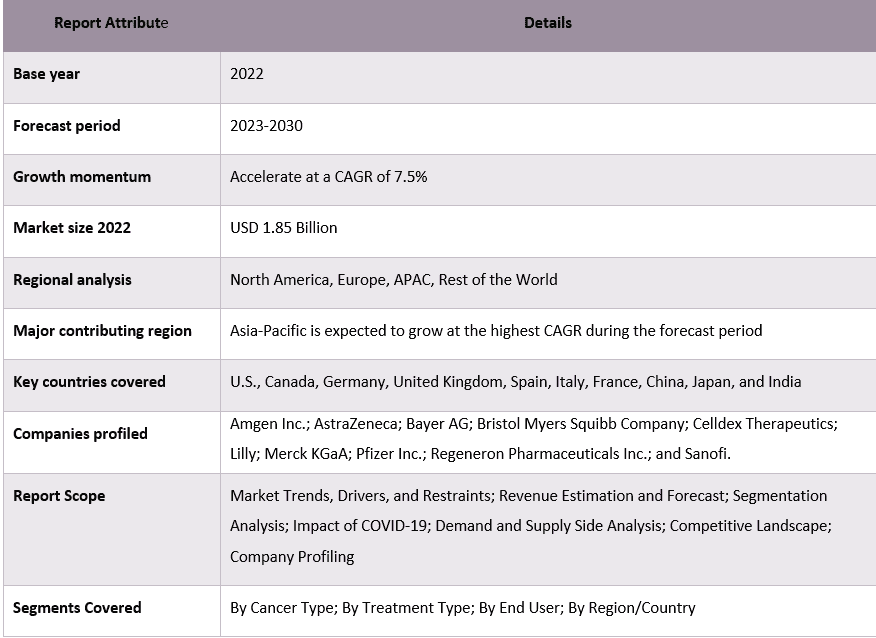
“Tra gli utenti finali, il segmento ospedaliero crescerà con un CAGR elevato durante il periodo di previsione”
In base agli utenti finali, il mercato è segmentato in ospedali, centri chirurgici ambulatoriali e altri. Si prevede che il segmento ospedaliero crescerà con un CAGR elevato durante il periodo di previsione a causa dell'aumento dei ricoveri ospedalieri a causa di un aumento della prevalenza del cancro alla gola che porta a un aumento delle procedure chirurgiche. Altri fattori, tra cui l'aumento della spesa oncologica, l'aumento dei livelli di consapevolezza dei pazienti sul cancro alla gola e la disponibilità di infrastrutture ospedaliere avanzate, l'aumento del numero di ospedali specializzati nei paesi sviluppati sono fattori che dovrebbero portare al dominio del segmento durante il periodo di previsione.Ad esempio, nel giugno 2023, un ospedale a centro unico con sede nel nord dell'Indiaregistro dei tumorilo studio includeva tutti i casi di cancro della testa e del collo diagnosticati principalmente che frequentavano l'ospedale fino a dicembre 2020, in cui sono stati segnalati un totale di 574 casi confermati di cancro della testa e del collo.Pertanto, tra gli utenti finali, la categoria ospedaliera dovrebbe assistere a un CAGR più elevato durante il periodo di previsione.
“Tra le regioni, il Nord America ha detenuto una quota significativa del mercato nel 2022””
Il Nord America sta dominando il mercato nello scenario attuale del 2022 a causa dell'aumento dell'inquinamento da fumo, dell'aumento del consumo di alcol e del crescente numero di investimenti nello sviluppo di efficaci terapie per il cancro alla gola. Le organizzazioni governative stanno avviando programmi di sensibilizzazione sul cancro alla gola per fornire un'assistenza efficiente ai pazienti.Ad esempio, nel luglio 2023, l'American Association for Cancer Research e l'American Head and Neck Society hanno organizzato la terzaConferenza congiunta AACR-AHNS sul cancro della testa e del colloa Montreal. per presentare le loro ultime ricerche e fornire aggiornamenti critici sulla biologia, il rilevamento, l'imaging, la prevenzione e la terapia del cancro della testa e del collo, tra gli altri argomenti. L'AACR assegna anche sovvenzioni di ricerca a ricercatori che conducono ricerche promettenti relative al cancro della testa e del collo.Pertanto, tra le regioni, il Nord America ha detenuto una quota significativa del mercato nel 2022.
Q1: Qual è l'attuale dimensione del mercato e il potenziale di crescita delmercato dei trattamenti per il cancro alla gola?
Risposta: Il mercato dei trattamenti per il cancro alla gola è stato valutato a 6,5 miliardi di dollari nel 2022 e si prevede che crescerà con un CAGR dell'8,5% durante il periodo di previsione (2023-2030).
Q2: Quali sono i fattori trainanti per la crescita delmercato dei trattamenti per il cancro alla gola?
L'aumento del consumo di alcol e tabacco, l'aumento dei programmi di sensibilizzazione sul cancro alla gola e l'aumento degli investimenti nei reparti di oncologia sono i fattori trainanti per la crescita del mercato dei trattamenti per il cancro alla gola.
Q3: Quale segmento detiene la quota maggiore delmercato dei trattamenti per il cancro alla gola per tipo di cancro?
Risposta: Il segmento del cancro della laringe detiene la quota maggiore del mercato dei trattamenti per il cancro alla gola per tipo di cancro.
Q4: Quali sono le tecnologie e le tendenze emergenti nelmercato dei trattamenti per il cancro alla gola?
Risposta: Il trapianto e la terapia cellulare, i test diagnostici molecolari e i prodotti di epigenetica e il sistema Digital Light Cycler System PCR e i sistemi diagnostici integrati dall'IA sono le tecnologie e le tendenze emergenti nel mercato dei trattamenti per il cancro alla gola.
Q5: Quale regione dominerà ilmercato della terapia per il cancro alla gola?
Risposta: Si prevede che il Nord America dominerà il mercato durante il periodo di previsione.
Q6: Chi sono i principali attori che operano nelmercato della terapia per il cancro alla gola?
Risposta: Amgen Inc.; AstraZeneca; Bayer AG; Bristol Myers Squibb Company; Celldex Therapeutics; Lilly; Merck KGaA; Pfizer Inc.; Regeneron Pharmaceuticals Inc.; e Sanofi sono i principali attori che operano nel mercato della terapia per il cancro alla gola.
Motivi per acquistare questo rapporto:
- Lo studio include dimensionamento del mercato e analisi delle previsioni convalidati da esperti chiave del settore autenticati.
- Il rapporto presenta una rapida panoramica delle prestazioni complessive del settore a colpo d'occhio.
- Il rapporto copre un'analisi approfondita dei principali attori del settore, con particolare attenzione ai principali dati finanziari aziendali, al portafoglio prodotti, alle strategie di espansione e agli sviluppi recenti.
- Esame dettagliato di fattori trainanti, vincoli, tendenze chiave e opportunità prevalenti nel settore.
- Lo studio copre in modo completo il mercato in diversi segmenti.
- Analisi approfondita a livello regionale del settore.
Opzioni di personalizzazione:
Il mercato globale della terapia per il cancro alla gola può essere ulteriormente personalizzato in base alle esigenze o a qualsiasi altro segmento di mercato. Inoltre, UMI comprende che potresti avere le tue esigenze aziendali, quindi non esitare a connetterti con noi per ottenere un rapporto che soddisfi completamente le tue esigenze.
Indice
Metodologia di ricerca per l'analisi del mercato della terapia per il cancro alla gola (2023-2030)
L'analisi del mercato storico, la stima del mercato attuale e la previsione del mercato futuro del mercato globale della terapia per il cancro alla gola sono stati i tre passaggi principali intrapresi per creare e analizzare l'adozione della terapia per il cancro alla gola nelle principali regioni a livello globale. È stata condotta un'esauriente ricerca secondaria per raccogliere i numeri storici del mercato e stimare le dimensioni attuali del mercato. In secondo luogo, per convalidare questi approfondimenti, sono state prese in considerazione numerose scoperte e ipotesi. Inoltre, sono stati condotti anche numerosi colloqui primari, con esperti del settore in tutta la catena del valore del mercato globale della terapia per il cancro alla gola. Dopo l'assunzione e la convalida dei numeri di mercato attraverso interviste primarie, abbiamo impiegato un approccio top-down/bottom-up per prevedere le dimensioni complete del mercato. Successivamente, sono stati adottati metodi di scomposizione del mercato e di triangolazione dei dati per stimare e analizzare le dimensioni del mercato dei segmenti e dei sottosegmenti del settore a cui si riferisce. La metodologia dettagliata è spiegata di seguito:
Analisi delle dimensioni storiche del mercato
Fase 1: Studio approfondito delle fonti secondarie:
È stato condotto uno studio secondario dettagliato per ottenere le dimensioni storiche del mercato della terapia per il cancro alla gola attraverso fonti interne dell'azienda comerelazioni annuali e rendiconti finanziari, presentazioni delle prestazioni, comunicati stampa, ecc.e fonti esterne, tra cuiriviste, notizie e articoli, pubblicazioni governative, pubblicazioni dei concorrenti, rapporti di settore, database di terze parti e altre pubblicazioni credibili.
Fase 2: Segmentazione del mercato:
Dopo aver ottenuto le dimensioni storiche del mercato della terapia per il cancro alla gola, abbiamo condotto un'analisi secondaria dettagliata per raccogliere approfondimenti storici del mercato e condividerli per diversi segmenti e sottosegmenti per le principali regioni. I principali segmenti sono inclusi nel rapporto come tipo di cancro, tipo di trattamento, utente finale e regioni. Ulteriori analisi a livello di paese sono state condotte per valutare l'adozione complessiva dei modelli di test in quella regione.
Fase 3: Analisi dei fattori:
Dopo aver acquisito le dimensioni storiche del mercato dei diversi segmenti e sottosegmenti, abbiamo condotto un'approfonditaanalisi dei fattoriper stimare le dimensioni attuali del mercato della terapia per il cancro alla gola. Inoltre, abbiamo condotto un'analisi dei fattori utilizzando variabili dipendenti e indipendenti come tipo di cancro, tipo di trattamento, utente finale e regioni della terapia per il cancro alla gola. È stata condotta un'analisi approfondita degli scenari dal lato della domanda e dell'offerta, considerando le principali partnership, fusioni e acquisizioni, l'espansione aziendale e i lanci di prodotti nel settore della terapia per il cancro alla gola in tutto il mondo.
Stima e previsione delle dimensioni attuali del mercato
Dimensionamento attuale del mercato:Sulla base di approfondimenti attuabili dai 3 passaggi precedenti, siamo arrivati alle dimensioni attuali del mercato, ai principali attori nel mercato globale della terapia per il cancro alla gola e alle quote di mercato dei segmenti. Tutte le quote percentuali richieste, le suddivisioni e le scomposizioni del mercato sono state determinate utilizzando l'approccio secondario sopra menzionato e sono state verificate attraverso interviste primarie.
Stima e previsione:Per la stima e la previsione del mercato, sono stati assegnati pesi a diversi fattori, inclusi driver e tendenze, vincoli e opportunità disponibili per le parti interessate. Dopo aver analizzato questi fattori, sono state applicate tecniche di previsione pertinenti, ad es. l'approccio top-down/bottom-up, per arrivare alla previsione di mercato per il 2030 per diversi segmenti e sottosegmenti nei principali mercati a livello globale. La metodologia di ricerca adottata per stimare le dimensioni del mercato comprende:
- Le dimensioni del mercato del settore, in termini di ricavi (USD) e il tasso di adozione del mercato della terapia per il cancro alla gola nei principali mercati a livello nazionale
- Tutte le quote percentuali, le suddivisioni e le scomposizioni dei segmenti e dei sottosegmenti di mercato
- I principali attori nel mercato globale della terapia per il cancro alla gola in termini di prodotti offerti. Inoltre, le strategie di crescita adottate da questi attori per competere nel mercato in rapida crescita
Validazione delle dimensioni e della quota di mercato
Ricerca primaria:Sono stati condotti colloqui approfonditi con i Key Opinion Leader (KOL) tra cui dirigenti di alto livello (CXO/VP, responsabile vendite, responsabile marketing, responsabile operativo, responsabile regionale, responsabile nazionale, ecc.) nelle principali regioni. I risultati della ricerca primaria sono stati quindi riassunti e sono state eseguite analisi statistiche per dimostrare l'ipotesi dichiarata. Gli input dalla ricerca primaria sono stati consolidati con i risultati secondari, trasformando così le informazioni in approfondimenti attuabili.
Suddivisione dei partecipanti primari in diverse regioni
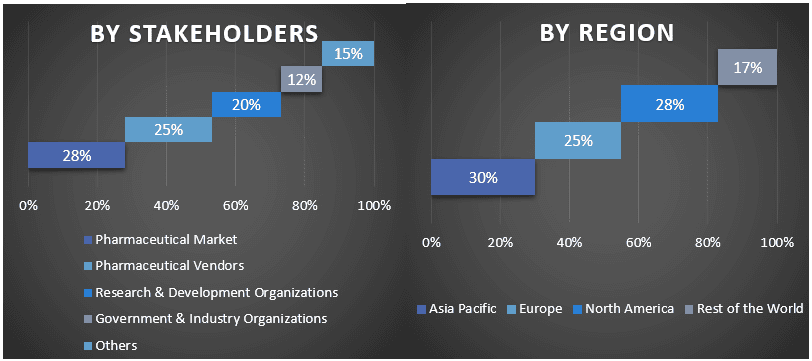
Ingegneria del mercato
La tecnica di triangolazione dei dati è stata impiegata per completare la stima complessiva del mercato e per arrivare a numeri statistici precisi per ogni segmento e sottosegmento del mercato globale della terapia per il cancro alla gola. I dati sono stati suddivisi in diversi segmenti e sottosegmenti dopo aver studiato vari parametri e tendenze nelle aree di tipo di cancro, tipo di trattamento, utente finale e regioni nel mercato globale della terapia per il cancro alla gola.
L'obiettivo principale dello studio globale sul mercato della terapia per il cancro alla gola
Le attuali e future tendenze del mercato globale della terapia per il cancro alla gola sono state individuate nello studio. Gli investitori possono ottenere informazioni strategiche per basare la loro discrezionalità per gli investimenti sull'analisi qualitativa e quantitativa eseguita nello studio. Le attuali e future tendenze del mercato hanno determinato l'attrattiva complessiva del mercato a livello regionale, fornendo una piattaforma per il partecipante industriale per sfruttare il mercato inesplorato per beneficiare di un vantaggio da primo attore. Altri obiettivi quantitativi degli studi includono:
- Analizzare le dimensioni attuali e previste del mercato della terapia per il cancro alla gola in termini di valore (USD). Analizzare anche le dimensioni attuali e previste del mercato di diversi segmenti e sottosegmenti
- I segmenti nello studio includono aree di tipo di cancro, tipo di trattamento, utente finale e regioni
- Definire e analizzare il quadro normativo per il settore terapeutico del cancro alla gola.
- Analizzare la catena del valore coinvolta con la presenza di vari intermediari, insieme all'analisi dei comportamenti dei clienti e dei concorrenti del settore.
- Analizzare le dimensioni attuali e previste del mercato del settore terapeutico del cancro alla gola per le principali regioni.
- I principali paesi delle regioni studiate nel rapporto includono Asia Pacifico, Europa, Nord America e il resto del mondo.
- Profili aziendali del mercato terapeutico del cancro alla gola e le strategie di crescita adottate dagli attori del mercato per sostenere il mercato in rapida crescita
- Analisi approfondita a livello regionale del settore
Correlati Report
I clienti che hanno acquistato questo articolo hanno acquistato anche

